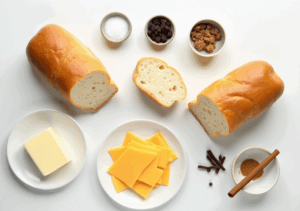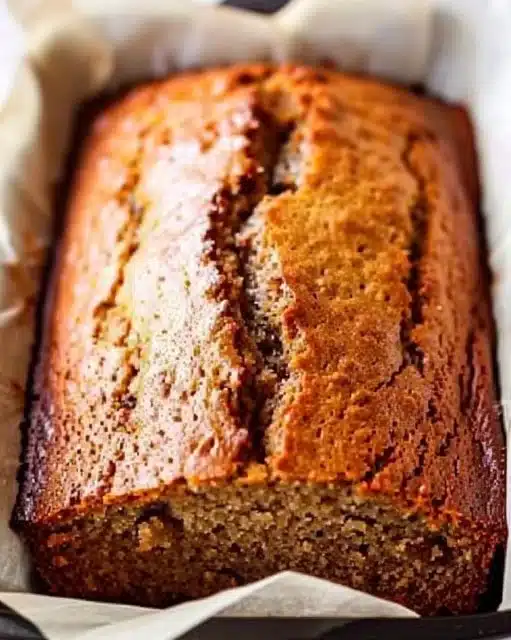Capirotada: Mexican Easter Bread Pudding with Rich Tradition & Flavor
Capirotada, the beloved Mexican Easter bread pudding, is a dish steeped in centuries of history, religious symbolism, and family tradition. Its delightful combination of sweet and savory ingredients has made it a cherished staple, especially during Lent and Holy Week. More than just a dessert , it’s a culinary tribute to faith, culture, and togetherness.
In this comprehensive guide, we’ll dive into the origins, symbolic meanings, recipe variations, and everything you need to know to create your own perfect capirotada.
📜 What Is Capirotada?
Capirotada is a traditional Mexican bread pudding made with layers of toasted bolillo bread, piloncillo syrup (a type of raw cane sugar), cinnamon sticks, cloves, raisins, cheese, and butter. While the combination might sound unconventional—especially the cheese—it creates an incredible contrast of textures and flavors.
This iconic dish isn’t just tasty—it holds deep religious significance. Historically prepared during Lent, capirotada is a symbolic representation of the Passion of Christ, and its ingredients each have a deeper meaning rooted in Catholic tradition.
If you’re looking to explore more recipes rooted in Mexican Lent traditions, check out this curated list of Traditional Mexican Lent Recipes.
🕊️ Symbolism in Every Bite
The ingredients in capirotada are rich with spiritual meaning, making it far more than a simple dessert:
-
Bread symbolizes the Body of Christ
-
Piloncillo syrup represents His blood
-
Cloves stand for the nails of the cross
-
Cinnamon sticks represent the wood of the cross
-
Melted cheese is said to symbolize the Holy Shroud
This depth of meaning is why capirotada is typically eaten on Good Friday or other meatless days during Lent. If you’re unfamiliar with piloncillo, this detailed guide—What is Piloncillo?—explains what makes it unique.
🏛️ History of Capirotada
The origins of capirotada date back to 15th-century Spain, where it began as a savory bread pudding. Spanish colonists brought the concept to Mexico, where it was transformed using local ingredients and reimagined as a sweet, symbolic dish.
Over the centuries, it has become a staple of Mexican cuisine, especially among Mexican-American families, who view it as both a cultural and religious tradition passed through generations.
🍽️ Recipe Variations Across Regions
Like many classic dishes, capirotada varies by region and family preference. Some popular variations include:
-
Capirotada de Leche – Uses milk or condensed milk instead of syrup.
-
Capirotada con Frutas – Includes bananas, coconut, or prunes.
-
Nutty Capirotada – Adds peanuts, pecans, or almonds for crunch.
-
Topped with Sprinkles – A festive twist with bright colors and texture.
Each family may swear by their version—handed down through generations and rooted in local ingredients and personal taste.
🛒 Key Ingredients and Substitutions
To make traditional capirotada, here are the core ingredients:
-
Bolillo rolls (or French bread)
-
Piloncillo (or dark brown sugar)
-
Mexican cinnamon (canela)
-
Whole cloves
-
Raisins
-
Longhorn cheddar or queso Oaxaca
-
Butter
Substitutions to consider:
-
If you can’t find piloncillo, use packed dark brown sugar.
-
Queso fresco or Monterey Jack are milder cheese alternatives.
-
Any crusty bread works in place of bolillo.

👩🍳 How to Make Traditional Capirotada
Step-by-Step Instructions:
-
Dry the Bread
-
Slice bolillo into ½-inch thick rounds.
-
Butter both sides and toast until golden and dry.
-
-
Make Piloncillo Syrup
-
Boil water, piloncillo, cinnamon sticks, and cloves.
-
Simmer until it forms a thin syrup, then steep and strain.
-
-
Layer the Ingredients
-
In a greased dish, layer:
-
Toasted bread
-
Raisins
-
Cheese
-
Piloncillo syrup
-
-
Repeat for three layers, soaking in between.
-
-
Bake
-
Cover and bake at 350°F for 40 minutes.
-
Uncover and bake until cheese is golden (about 10–15 minutes).
-
-
Cool & Serve
-
Let it rest 10 minutes before serving warm.
-
💡 Pro Tips for Perfect Capirotada
-
Don’t skip the soaking time between layers. It ensures every piece of bread absorbs the syrup.
-
Avoid overbaking, since the syrup can dry out.
-
Let it cool slightly—straight out of the oven it can be extremely hot and gooey.
🎉 Serving Suggestions
Capirotada is incredibly versatile:
-
Serve warm for brunch with café de olla
-
Enjoy chilled or room temp as an after-dinner treat
-
Perfect for Lenten potlucks, church gatherings, or family Sunday dinners
🌟 Toppings & Creative Twists
You can personalize your capirotada with:
-
Nuts: almonds, pecans, peanuts, or pepitas
-
Fruits: prunes, banana, mango, shredded coconut
-
Colorful sprinkles: festive for holidays and parties
-
Mini-muffin tins: for individual servings or gifts
🏡 A Dish Full of Nostalgia
Ask any Mexican-American family and you’ll likely hear stories of capirotada passed down from abuelitas and served in neighborhood gatherings. It’s more than food—it’s a symbol of home, memory, and spiritual devotion.
In fact, it’s not uncommon to receive a slice from a neighbor during Holy Week, each one made slightly differently, each one packed with love and meaning.
To learn more about the cultural heritage behind Mexican food symbolism, visit National Geographic’s feature on Mexican cuisine.
❓ FAQs About Capirotada
What does capirotada mean in English?
It roughly translates to “capped” or “covered,” referring to its layered structure.
Is capirotada served hot or cold?
Traditionally served warm, but equally delicious at room temperature or cold.
When is capirotada eaten?
Most often during Lent, particularly Good Friday when meat is avoided.
Does capirotada have coconut?
Some regional versions include coconut, but it’s optional.
Is “migas” the same as capirotada?
No. Migas is a savory dish made with tortilla or bread, not sweet like capirotada.
How do you pronounce capirotada?
KAH-pee-ro-TAH-dah.
🍮 Related Mexican Desserts You’ll Love
-
Arroz con leche – Creamy rice pudding with cinnamon.
-
Tres leches capirotada – A modern twist blending two classic desserts.
-
Mexican chocolate and avocado pudding – Rich, smooth, and dairy-free.
✨ Final Thoughts
Whether you’re discovering capirotada for the first time or rekindling a childhood memory, this dish brings together flavor, tradition, and faith. It’s a simple, heartfelt dessert with a story that spans centuries.
Try it this season—and don’t forget to make it your own.







